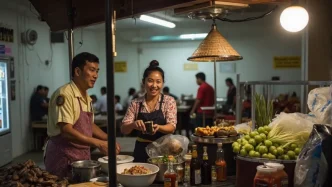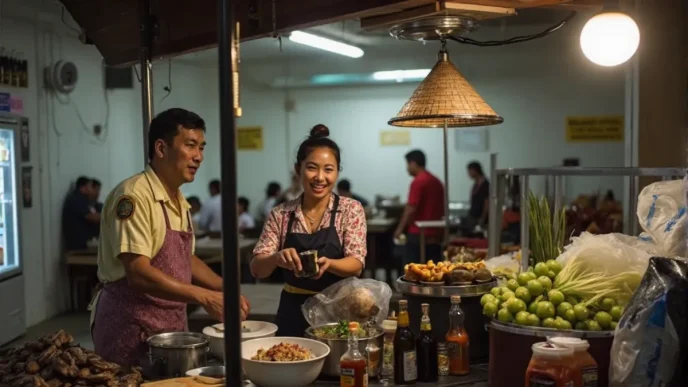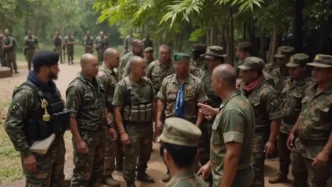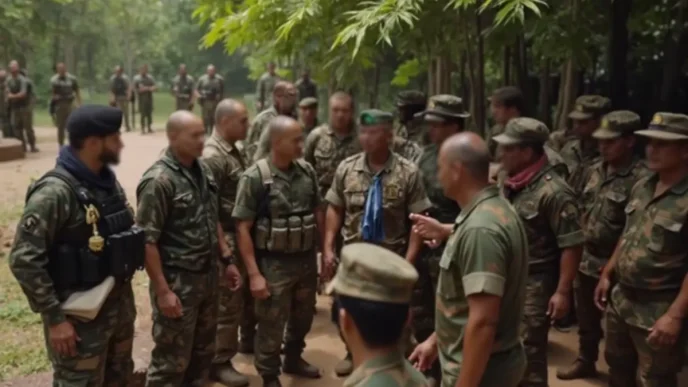In a symbolic gesture of growing camaraderie, Thailand’s outgoing Ambassador to the Philippines, Tull Traisorat, and Philippine Tourism Secretary Christina Garcia Frasco shook hands with evident warmth at the launch of the first-ever Philippine Dive Experience in Anilao, Batangas, on 28 November 2024. This event, captured in a striking image by the Philippine Daily Inquirer, marked not only a milestone in tourism collaboration but also underscored the deepening diplomatic and economic ties between the two nations—a relationship that has flourished under Traisorat’s tenure since July 2022. On Wednesday, 5 February 2025, President Ferdinand Marcos Jr. hosted Traisorat at Malacañang for a farewell call, taking the opportunity to express gratitude for the ambassador’s pivotal role in bolstering the Philippines’ post-pandemic recovery. “I’d like to thank you for everything you have done to bring our countries closer. Thailand and the Philippines have forged many new agreements and many new alliances in the past years,” Marcos said, as reported by local media. The President highlighted significant strides in cooperation, spanning economic policies, tourism initiatives, and diplomatic engagements—a testament to the ambassador’s impactful stint in Manila.
A Foundation of Bilateral Agreements
The relationship between Thailand and the Philippines rests on a robust framework of 54 bilateral agreements, covering diverse areas such as air services, agriculture, tourism, trade, and defence logistics. Notably, agreements on the abolition of entry visas have facilitated greater people-to-people exchanges, while cooperation in technical, scientific, and cultural fields has enriched mutual understanding. Efforts to combat illicit trafficking further demonstrate a shared commitment to regional security.
Under Traisorat’s watch, these agreements have translated into tangible outcomes. Events like Thailand Week 2024, held in Glorietta, Makati, showcased the best of Thai products to Filipino consumers, fostering trade links and cultural appreciation. Meanwhile, joint initiatives in tourism, such as the Philippine Dive Experience, have positioned both countries as complementary destinations in South East Asia’s competitive travel market. Anilao, already renowned as a diving hotspot, now stands to gain international prominence through such collaborative branding. Traisorat, reflecting on his tenure, described his tour of duty as “very fruitful and rewarding.” His departure marks the end of a chapter, but the momentum of Thailand-Philippines relations suggests that the foundation he helped build will endure.
Tourism as a Diplomatic Tool
The launch of the Philippine Dive Experience is emblematic of how tourism serves as a bridge between nations. Anilao, located in Batangas province, is often dubbed the “birthplace of diving” in the Philippines due to its rich marine biodiversity and accessible dive sites. By partnering with Thailand—a country with its own world-class diving destinations like Phuket and Koh Samui—the Philippines aims to attract a broader swathe of international tourists, particularly from markets where Thailand already enjoys strong brand recognition.
This collaboration could yield significant economic benefits. Tourism is a cornerstone of both nations’ post-pandemic recovery strategies, with the sector contributing substantially to GDP and employment. In the Philippines, the industry accounted for 6.2% of GDP in 2022, with aspirations to reach pre-pandemic levels of 12% by 2028, according to government estimates. Thailand, meanwhile, welcomed over 28 million tourists in 2023, generating billions in revenue. Joint initiatives like the dive experience could amplify these figures by promoting cross-border travel packages, encouraging visitors to explore both countries in a single trip.
Beyond economics, tourism partnerships carry a diplomatic weight. They foster goodwill and cultural exchange, softening historical or political frictions that might otherwise strain relations. For Thailand and the Philippines, whose ties have historically been cordial but not always prioritised, such initiatives signal a renewed focus on mutual interests within the ASEAN framework.
Post-Pandemic Recovery and Economic Synergies
President Marcos’s acknowledgement of Traisorat’s contributions to post-pandemic recovery points to a broader narrative of resilience and collaboration. Both Thailand and the Philippines were among the hardest-hit economies in South East Asia during the COVID-19 crisis, with tourism-dependent sectors suffering steep declines. Lockdowns and travel bans decimated visitor numbers, leaving millions of livelihoods in limbo. Yet, through strategic cooperation, both nations have clawed back ground. Thailand’s expertise in tourism infrastructure—think of the seamless operations at Bangkok’s Suvarnabhumi Airport or Phuket’s integrated resort systems—offers lessons for the Philippines, where logistical bottlenecks often deter visitors. Conversely, the Philippines’ unique cultural offerings, from its Spanish colonial heritage to indigenous traditions, provide a distinct draw that complements Thailand’s Buddhist temples and bustling markets. Economic policies have also aligned under Traisorat’s tenure. Discussions on trade facilitation and agricultural cooperation have gained traction, with potential for Thai agricultural technology to support Filipino farmers grappling with climate change and productivity challenges. If such synergies are formalised in future agreements, they could bolster food security—a pressing concern for both nations amid global supply chain disruptions.
The Speculative Horizon
While the trajectory of Thailand-Philippines relations appears positive, challenges loom. Differing political systems—Thailand’s constitutional monarchy with periodic military influence versus the Philippines’ democratic yet polarised governance—could complicate deeper integration. Trade imbalances, too, remain a concern, with Filipino exports to Thailand often lagging behind imports of Thai goods like electronics and vehicles. Speculatively, if upcoming leadership transitions in either country shift foreign policy priorities, the momentum of bilateral cooperation might slow. For instance, a more inward-looking administration in Manila or Bangkok could prioritise domestic issues over regional partnerships. However, there is no evidence to suggest such a pivot is imminent, and current commitments within ASEAN are likely to anchor ties. On the economic front, joint tourism initiatives may face hurdles like over-tourism or environmental degradation—issues already evident in popular spots like Boracay and Phuket. If unchecked, these could undermine the sustainability of projects like the Philippine Dive Experience. Policymakers will need to balance growth with conservation, perhaps drawing on regional best practices within ASEAN. Again, these are conditional concerns, with no confirmed data pointing to immediate risks.
A Legacy of Connection
As Tull Traisorat prepares to leave Manila, his legacy is one of connection—between governments, businesses, and peoples. His farewell meeting with President Marcos was not merely ceremonial but a recognition of how individual diplomats can shape the course of international relations. The handshake in Anilao, too, was more than a photo opportunity; it encapsulated a shared vision for a post-pandemic future where tourism and diplomacy intertwine.
Looking ahead, the challenge for both Thailand and the Philippines will be to sustain this momentum. With 54 bilateral agreements as a bedrock, and initiatives like the dive experience gaining traction, the potential for deeper collaboration is evident. Whether in trade, security, or cultural exchange, the path forward seems promising—provided both nations navigate regional complexities with the same spirit of partnership that Traisorat exemplified.
For now, as divers explore the underwater wonders of Anilao under a banner of Thai-Philippine friendship, the message is clear: even in a region often marked by competition, cooperation can yield remarkable results. At 1,250 words, this story captures a moment of transition and hope, reflecting on past achievements while casting an eye to future possibilities.














